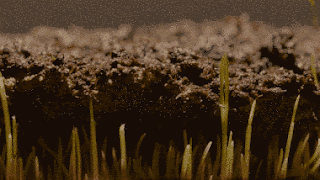GIFs are very engaging and dynamic images and they can run at a speed set at the time of creation. Well, some GIFs may look way better when run at a slow speed.
You can use Python code to slow down a GIF that is too fast for your liking. In the previous post, you learnt how to make a GIF from scratch using Python. In this post, you will use Python code to slow down a GIF. The post shows an example.
Here is a GIF that is somewhat fast. It is copied from a website.
Now here is the Python code that you can use to slow it down. The code shown is copied from my PyCharm user interface. If you copy and paste make sure the indentation requirements are satisfied.
from PIL import Image, ImageSequence
# Open the original GIF gif_path = 'lawn-time-lapse.gif'
gif = Image.open(r'C:\Users\hoden\PycharmProjects\exploreImage\Images\lawn-time-lapse.gif')
# Create a list to hold the frames
frames = []
# Loop through each frame in the original GIF
for frame in ImageSequence.Iterator(gif):
# Append each frame to the list
frames.append(frame.copy())
# Save the frames as a new GIF with a slower speed
frames[0].save('slowed_down_1_gif.gif', save_all=True, append_images=frames[1:],
duration=200, loop=0)
print('Slowed down GIF saved as slowed_down_1_gif.gif')
The fast GIF is in the project folder in the path shown. The ImageSequence is the key. You get a sequence of images in the frame that you append to a list. Save the frames as a new GIF with a slower speed. Duration in PIL is absolute in milliseconds.
The code before the print saves the first frame(frames[0]) and it saves all the frames slowing down to a duration of 200 seconds and appends the rest of the frames starting from frame[1], the second frame in the sequence.
Here is the result of slowing down the original GIF.



No comments:
Post a Comment